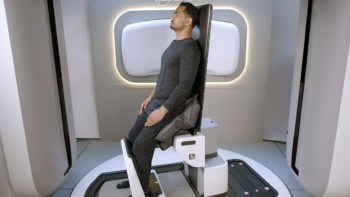
Unconsciousness is characterized by an inability to report subjective experience. For patients under anaesthesia, or in a more enduring state of unconsciousness caused by brain injury, reliable markers that indicate the presence or absence of consciousness remain elusive. Now, an international team of scientists has reported functional MRI (fMRI)-based evidence of distinct patterns of brain activity that could differentiate consciousness from unconsciousness (Sci. Adv. 10.1126/sciadv.aat7603).
To search for these indicators, Athena Demertzi and colleagues recorded fMRI data from 159 subjects scanned at four independent research sites. Participants included healthy individuals, as well as patients diagnosed with unresponsive wakefulness syndrome (UWS), in which they can open their eyes but do not display voluntary movements, and patients in a minimally conscious state (MCS), in which they show additional behaviours potentially indicative of awareness.
The researchers analysed how fluctuations in the fMRI blood oxygenation level-dependent (BOLD) signal — a proxy for neuronal activity — were coordinated across 42 brain regions representing six brain networks that play an important role in cognition. They uncovered four distinguishable patterns, including a pattern of high complexity with long-distance brain-wide coordination between regions (pattern 1) and a pattern showing low inter-areal coordination (pattern 4).
Pattern 1 was most prevalent in healthy conscious participants, followed by patients in MCS, and least likely to be seen in patients with UWS. In contrast, pattern 4 was more likely to be found in unresponsive patients than patients in MCS, and least likely to occur in healthy controls. Patterns 2 and 3 were equally probable across all groups, and may represent transitional states.
To further characterize coordination dynamics, the researchers computed the probabilities of transitioning between the different brain patterns. They found that individuals with higher levels of consciousness – who are more likely to reside in pattern 1 – were also more likely to depart to and from this pattern toward patterns 2 and 3. The brains of patients in UWS were more likely to stay in pattern 4 and avoid exploration of other brain configurations.
The researchers also scanned some of the participants under anaesthesia. They found that in all anaesthetized patients, pattern 1 became less prevalent while pattern 4 became the most prevalent, irrespective of clinical diagnosis — supporting the specificity of the low-coordination pattern to unconsciousness. Anaesthetized patients also displayed a lower probability of transitioning between different brain states over time.
Detecting these brain patterns in real time could allow for externally induced manipulations to non-invasively restore consciousness. The researchers note that this detection process also has the potential to greatly facilitate medical decision-making for patients in whom consciousness is impaired.
“We conclude that these patterns of transient brain signal coordination are characteristic of conscious and unconscious brain states, warranting future research concerning their relationship to ongoing conscious content, and the possibility of modifying their prevalence by external perturbations, both in healthy and pathological individuals, as well as across species,” the authors write.



